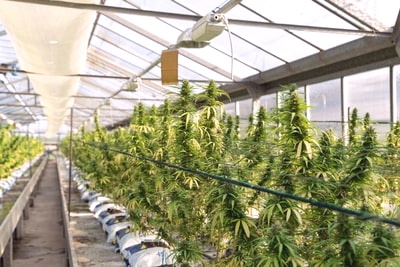Do strain names actually mean anything? The simple answer is it depends.
Historically, strain names were used on the black market in much the same way codenames work in spy movies. You wouldn’t want to say anything incriminating on a potentially compromised radio channel — that’s the lawyer in me coming out — so in order to be discreet and stay clean, people who were moving formerly illegal cannabis used code names.
Some of these names were derived from visual appearance, like the Purple Punches, Panama Reds, or Pink Kushes of the world. Strain names are often something as simple as the color you see. Other strains got their names because of their smell, think your Sour Diesels, Triple Cheeses, or Bubble Gums.
It makes sense that many strains are named for what your senses tell you about them: taste, smell, color, even texture. Then naming conventions get complicated in that other strains may be named after personalities, places, activities, objects, and really anything under the sun. For example: Afghan Kush, Jack Herer, Venice OG, Stevie Wonder. It’s completely arbitrary.
The better question is, do these arbitrary names mean anything to consumers? They should! Strains named based on your senses could help you make a decision about which one to purchase. If you know you love peanut butter, maybe you’d enjoy Peanut Butter Breath. Or, if you like strains that help you to relax, you could discern that Couchlock might be a good option for you. New, nervous or first time cannabis consumers need guidance on what to select to suit their particular recreational or health and wellness concerns.
However, because there is no explicit, holistic rhyme or reason to naming conventions for cannabis strains, names are not always a good indicator or guide to help consumers determine what may or may not be the best strain for them. Consumers who are new to the cannabis space might get a good idea of what Couchlock will do for them. But on the flipside, there are strains, like the aforementioned Jack Herer that non-connoisseurs may have never heard of. Thus they have no idea what to expect from it. In that case, the strain name, an ode to the late great Jack Herer, doesn’t help the consumer in the least, as it gives no real clues on what they can expect from a sensation perspective.
What it really comes down to is marketing and sales strength. Cultivators want their product to pop on the shelves because the consumer market responds to clever names, whether that means something accessible to new consumers or recognizable to the connoisseurs. However, consumers likely would prefer standardization to help them make more effective and suitable purchase decisions.
Budtenders are helpful, but they can’t do everything
The big question is what can cannabis cultivators and provisioning centers or dispensaries do to make up for some less experienced consumers lack of knowledge? There are websites like Leafly that will provide some information, but even so the site doesn’t have details on every strain in every provisioning center nationally.
Budtenders can also step up and help newer cannabis consumers understand what they can expect, or help them find a strain that fits their tastes and needs best. But we can’t expect that budtenders have tried every single product their company sells. They can’t always speak to, for instance, which strains have particular value in a medicinal sense. Further, their tastes may not align with a consumer’s.
A better solution is for the industry at large to consider how consumers buy cannabis, and adjust strain naming conventions accordingly. That often begins with the cultivators, particularly those creating their own strains. They should be very clear when naming, and ensure that packaging and product descriptions answer some of the major questions a consumer may have on taste, strength, sensation, scent, etc.
So, do strain names mean anything? It depends, but they should mean something, and cultivators need to step up to correct the confusion. The industry is young, and in any young industry, there is confusion. If I as a cannabis cultivator am confused, odds are consumers are too, and a confused consumer is bad for business.
For new consumers walking into a dispensary, it can be incredibly overwhelming and confusing deciding what to try, and that confusion can lead to a bad experience with cannabis. People want to be able to look at a product on the shelf or in a kiosk menu and say, “that looks right for me.” I love fun strain names as much as the next guy, but it’s time for the industry to rethink how strain names will appeal to new and old cannabis consumers alike.
The post Strain Names Should Mean Something to Consumers appeared first on Cannabis Business Executive – Cannabis and Marijuana industry news.






